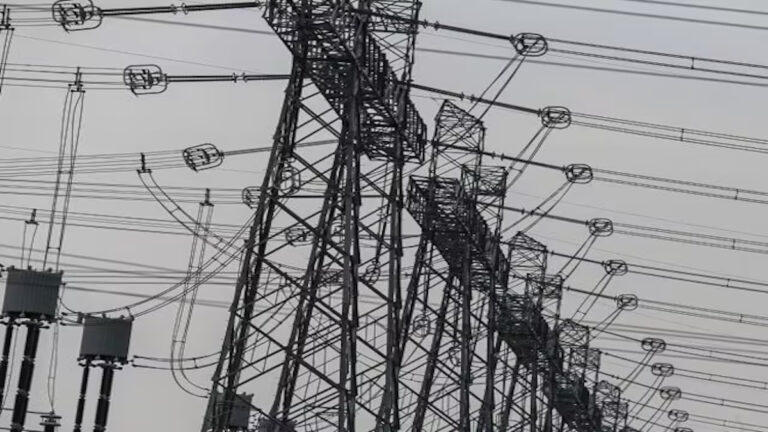
This summer and in future years, India faces a significant danger of nighttime power outages, as delays in adding additional coal-fired and hydroelectric capacity might hinder the country’s ability to meet increasing electrical demand when solar energy is unavailable.
Rapid solar farm expansion has helped India avoid daytime supply shortages, but a lack of coal-fired and hydroelectric capacity threatens to expose millions to extensive outages at night, according to government statistics and internal papers obtained by Reuters.
According to an internal report accessed by Reuters, India’s power availability in “non-solar hours” this April is predicted to be 1.7% lower than peak demand, a measure of the largest electrical need at any one moment.
The peak nighttime demand in April is estimated to be 217 gigatonnes (GW), up 6.4% from the highest overnight levels recorded in April last year.
“The situation is a bit tense,” stated Grid Controller of India Ltd. (Grid-India) in a Feb. 3 memo.
Although Indians hoping to escape the heat this summer would want consistent electricity for their air conditioners, nighttime outages pose a danger to companies that run around the clock, such as car, electronics, steel, and fertilizer factories.
“If there is a power outage for even one minute, paper pulp becomes trapped, causing hundreds of thousands of rupees in losses,” said P.G. Mukundan Nair, former chairman of an Indian paper industry association who has been in the paper production business for over three decades.
“Even a little disruption in the power supply would cause mayhem,” Nair said.
Grid-shortfall India’s projections were generated weeks before India’s meteorological agency projected heat waves between March and May, so the summer energy shortages might be larger than anticipated.
STEPS TO TAKE IN AN EMERGENCY
Alok Kumar, India’s federal electricity secretary, dismissed fears, saying the administration has taken “all precautions” to minimize power outages.
“We are making capacity accessible at competitive prices to all states,” Kumar told Reuters.
After the Grid-India study, the government accelerated maintenance at several coal-fired power facilities and acquired additional gas-fired capacity to avoid disruptions, according to another senior government official.
According to Grid-February India’s statement, up to 189.2 GW of coal-fired power is scheduled to be available in April. According to Reuters estimates based on Grid-India statistics, this would be an increase of more than 11% over the previous year.
Coal, nuclear, and gas capacity are estimated to cover around 83% of peak demand at night.
Hydropower will be critical not just for meeting a large portion of the remaining supply but also as a flexible generator, since coal-fired facilities cannot be scaled up and down quickly to meet fluctuations in demand.
Nevertheless, Grid-India predicts that peak hydro availability in April of this year will be 18% lower than in April of last year, when production was boosted by favorable weather conditions.
Imported coal-fired power plants would be required to increase output to up to 55% of total potential, up from 21% in February, while domestic coal-fired units would be required to increase output to 75% of potential, up from 69% in February, according to Hetal Gandhi, Director of Research at CRISIL Market Intelligence and Analytics.
“The weight of increasing supply would undoubtedly be carried by coal and gas,” Gandhi said, adding that it would be a “difficult order” to achieve.
MORE CAPACITY IS REQUIRED
Nighttime outage chances are much higher than during the day. During the last five years, solar capacity has roughly quadrupled, in accordance with Prime Minister Narendra Modi’s vow to reduce carbon emissions in the Paris climate agreement.
As of April, solar has increased renewables’ contribution to as much as 18% of India’s output during the day.
After nightfall, the pressure becomes apparent, since coal-fired capacity has increased by just 9% in the previous five years.
From January to April last year, buyers bid for five times more power than sellers provided, according to a Reuters study of data from the Indian Energy Exchange, the country’s most liquid electrical trading market.
The growing demand-supply fault lines underline the need for accelerating coal capacity increases to avoid outages in the coming years.
According to statistics from the Central Electricity Administration, the construction of up to 26 coal-fired units with a capacity of 16.8 GW has been delayed by more than a year, with some plants facing delays of more than ten years.
According to power plant executives, local demonstrations over environmental concerns, legal problems over compensation for land acquisition, and a lack of labor and equipment are stalling development projects.
Hydropower and nuclear power capacity expansion face more difficult challenges, as they are hampered by a lack of foreign investment and resistance from opponents over safety and environmental concerns, threatening power supplies in the long run.